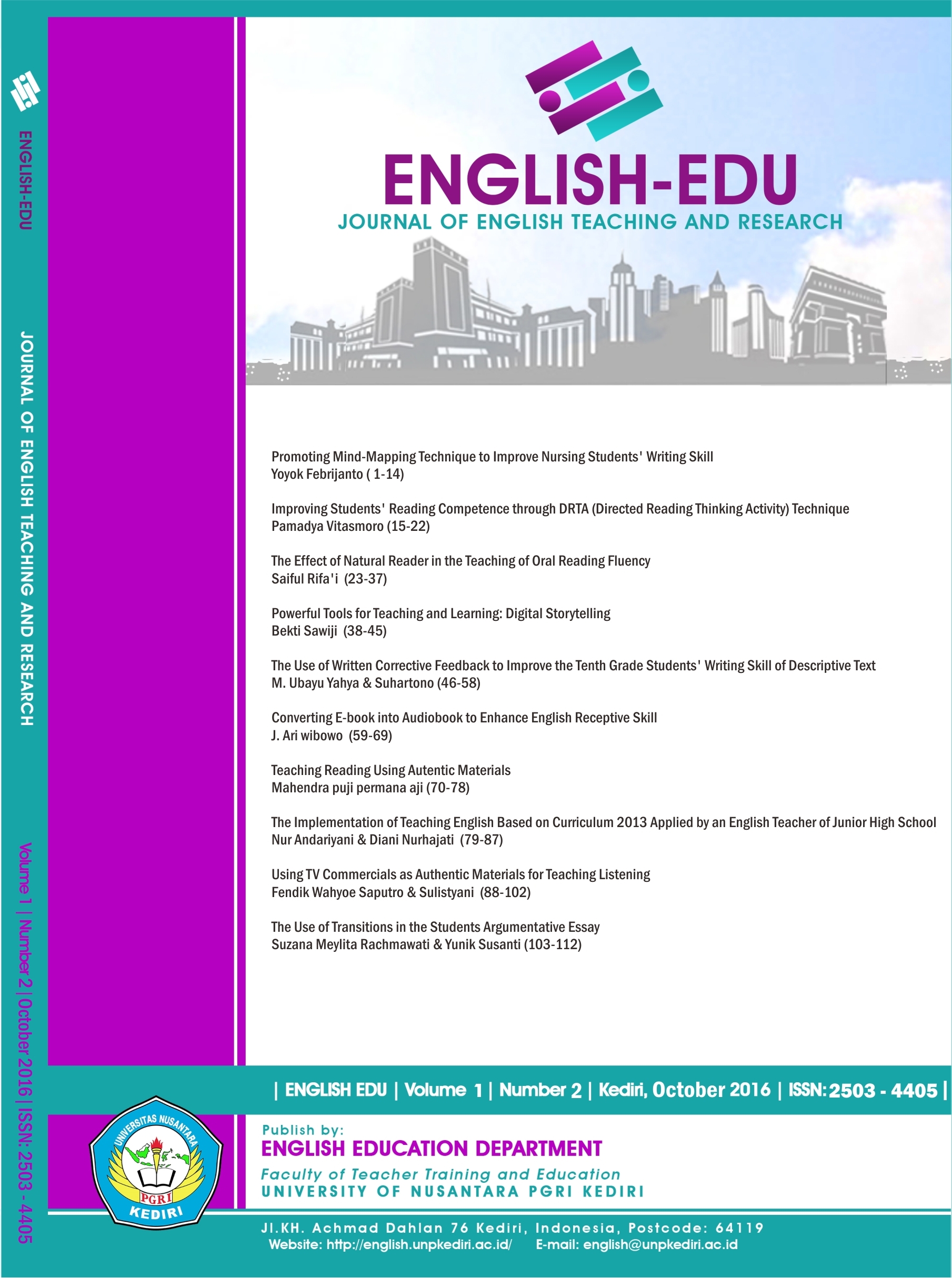THE USE OF WRITTEN CORRECTIVE FEEDBACK TO IMPROVE THE TENTH GRADE STUDENTS’ WRITING SKILL OF DESCRIPTIVE TEXT
DOI:
https://doi.org/10.29407/jetar.v1i2.479Abstract
Writing is a difficult process of how to share or state some ideas or opinions onto paper. Through text, students’ knowledge could be revealed. The wrong usage or application could be considered as the indicator that learning is taking place; however this kind of condition shouldn’t be allowed to happen continuously. The teacher should acknowledge where the students make the most error to give the appropriate technique. The research problems of this research are (1) What are written corrective feedbacks used by the tenth grade teacher in writing of descriptive text? (2) How do the students response to the written corrective feedbacks which are used by the tenth grade teacher in writing of descriptive text?
In this research, the writer used a descriptive case study to attain the data. The subjects of this research are the English teacher and the tenth grade students at SMK PGRI 1 KEDIRI. The research is done in two days. The writer uses instruments such as interview, field note, questionnaire and students’ written text.
The finding of this research is that (1) the teacher uses direct, indirect and metalinguistic corrective feedback; (2) direct corrective feedback gets 48% definitely like and 38% like, indirect corrective feedback gets 2% definitely like, 8% like and 2% do not like, and metalinguistic corrective feedback gets 2% like.
Based on the findings, it can be concluded that: (1) the teacher used direct corrective feedback to correct almost all the students’ errors on their written text of descriptive text; (2) students preferred direct corrective feedback more than the others. The writer suggested that the teacher should acknowledge the theories of written corrective feedback so the students do not understand direct corrective feedback only but all types of written corrective feedback.
Key Words: Writing, Direct Corrective Feedback, Indirect Corrective Feedback, Metalinguistic Corrective Feedback.
Downloads
Downloads
Published
Issue
Section
License
Authors who publish with this journal agree to the following terms:
- Copyright on any article is retained by the author(s).
- The author grants the journal, the right of first publication with the work simultaneously licensed under a Creative Commons Attribution License that allows others to share the work with an acknowledgment of the work’s authorship and initial publication in this journal.
- Authors are able to enter into separate, additional contractual arrangements for the non-exclusive distribution of the journal’s published version of the work (e.g., post it to an institutional repository or publish it in a book), with an acknowledgment of its initial publication in this journal.
- Authors are permitted and encouraged to post their work online (e.g., in institutional repositories or on their website) prior to and during the submission process, as it can lead to productive exchanges, as well as earlier and greater citation of published work.
- The article and any associated published material is distributed under the Creative Commons Attribution-ShareAlike 4.0 International License








 Article template
Article template



